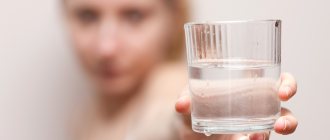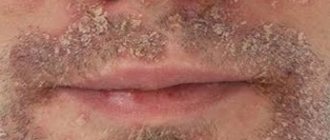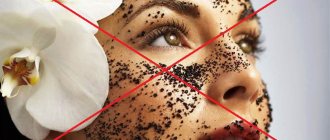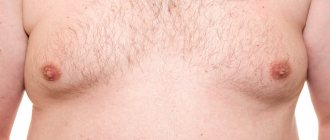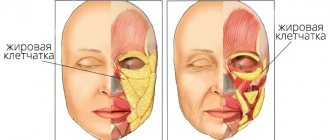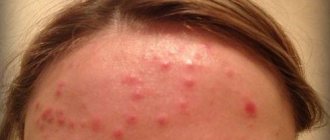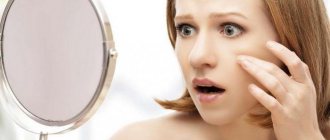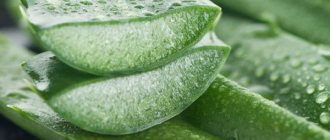Due to the deterioration of the environmental situation, especially in large cities, it is not surprising that patients increasingly began to complain about increased sensitivity of the facial skin. This type of skin requires special care. Considering the close connection between the condition of the skin and the general condition of the body as a whole, it should be understood that there cannot be template programs for facial skin care; each patient needs an individual approach. It is primarily necessary to establish the cause of increased skin sensitivity.
Sensitive facial skin causes
- Hypersensitivity caused by external factors, such as high or low ambient temperature, aggressive cosmetic effects, for example, after chemical peeling, laser facial rejuvenation, dermabrasion.
- Hypersensitivity of the skin that occurs against the background of somatic diseases, for example, cholecystitis or other diseases of the gastrointestinal tract, during pregnancy, during menopause, or in response to psycho-emotional stress.
- Combined action of internal and external factors. Differs in the severity of clinical signs.
Increased skin sensitivity is a response of the skin to the application of a cosmetic product, clinically manifested by redness, peeling, itching, and a feeling of tightness. May have varying degrees of severity: from moderate to intense. Skin hypersensitivity can occur in patients with any skin type, not only dry skin can be sensitive. Skin hypersensitivity is a borderline condition that can lead to the development of a true allergic reaction when external environmental conditions or somatic status worsen. In this case, consultation with an allergist and dermatologist will be necessary.
Types of skin sensitivity
Of course, in each individual case the skin reacts to irritants in its own way. But specialists from the Scientific Research Center for Healthy Skin in France systematized the symptoms and identified 4 types of sensitivity.
- The first type of sensitivity is caused by stress, food triggers and climatic factors. This is a minor and short-term discomfort.
- The second type manifests itself as a feeling of skin tightness, for example, when being in the cold. Additionally, redness may appear.
- In the third case, to the already listed signs, the appearance of irritation (red spots) is added when using cosmetics, and sometimes even simple cosmetic soap.
- The fourth type is when the appearance of sensitivity depends on the menstrual cycle or is associated with other hormonal changes.
Acquired sensitivity must be combated by eliminating the factor that provoked it. And these factors can be both external and internal.
Sensitive skin development mechanism
Three mechanisms are involved in the development of hypersensitivity: neurogenic inflammation, damage to cell membranes, and disruption of the barrier properties of the skin. The nervous, immune and endocrine systems are closely interconnected, especially in the skin. It contains C-fibers, which allow us to feel any touch on the skin, and they also convey a feeling of burning and itching when caustic substances come into contact with the skin. The density of sensory fibers on the face is usually higher than on the body. The greatest density of these fibers is in the area around the eyes. Due to this, the area around the eyes is more likely to show signs of hypersensitivity. With age, the density of C-fibers decreases.
Impaired skin barrier properties play an important role in the development of skin hypersensitivity. Such skin begins to lose moisture and dehydrate, immune cells are activated and signaling molecules are formed. Skin with a damaged barrier becomes permeable to bacterial agents and chemical components of cosmetics. When foreign substances enter, immune cells release bactericidal substances and free oxygen radicals, which causes irritation of C-fibers and, as a consequence, itching and burning.
The reaction to different cosmetic products in the same person on different areas of the skin may manifest itself differently. Fluctuations in skin sensitivity in women at different phases of the menstrual cycle and depending on the emotional state are also described.
Separately, I would like to dwell on increased sensitivity to UV radiation, the extreme degree of which is the development of photodermatitis - an inflammatory reaction of the skin with the formation of blisters. A phototoxic reaction can develop upon contact with certain plants (hogweed, sedge, buttercup, etc.) or when taking medications (tetracycline, gryaseofulvin, piroxicam). Substances that increase sensitivity to sunlight are called photosensitizers. Components of cosmetics can also be photosensitizers: essential oils, for example, bergamot, some preservatives, as well as components of decorative cosmetics. Therefore, when visiting a solarium, there should be no decorative cosmetics on your face.
Consultation with a cosmetologist
During consultation and diagnosis of the patient’s skin, it is necessary to objectively assess the current condition of the skin - status praesens, find out the previous cosmetic history: whether peelings based on trichloroacetic acid, resorcinol were used, whether laser dermabrasion was performed, whether steroids were prescribed. Treatment with steroidal anti-inflammatory drugs can lead to corticosteroid dermatitis. With prolonged use of steroid ointments, it can be especially difficult to normalize the skin, as it becomes fragile, constantly reddens and does not tolerate cosmetics well. Quite often, patients with an active inflammatory process on the face, abusing alcohol-containing drugs, and complaints of peeling, irritation and redness of the skin come to the clinic. Such patients need to first normalize the barrier properties of the skin, and in the second stage stop the inflammatory process.
Steps to care for sensitive skin
If normal skin requires minimal care - cleansing, moisturizing and SPF protection - then in the case of sensitivity it is advisable to include special products in the regimen. These can be soothing serums, essences and softening masks.
Decamiage
Chamomile Cleansing Oil
At the makeup remover stage, it is better to use hydrophilic oil.
It does not need to be applied to a cotton pad, which means you don’t have to rub your face again. Nutrition
Face mask “Almond milk and oats”
Apply a softening and soothing mask to cleansed skin.
In 10-15 minutes it will transform your face - eliminate traces of dryness and redness. Recovery
Care products
There is no need to remind you that when choosing a product to care for sensitive skin, you should first of all use common sense and rely on your own feelings. So, if your skin is oily, then you should wash your face using a product with herbal ingredients of aloe or cucumber. If signs of dry and sensitive skin are visible, then a nourishing mask according to your type will not be superfluous. But do not forget that any face mask for sensitive skin must be tested on the crook of your elbow in order to avoid an allergic reaction. And, of course, it’s worth thinking about whether your usual cream for sensitive skin is really that good. What if the best cream for sensitive skin is not the one that only moisturizes the skin, but also has an anti-inflammatory effect, while soothing irritated skin?
The universal moisturizing cream Panthenol EVO is very suitable for sensitive skin. Effective care ensures an optimal dexpanthenol content in this cream of 5%. It doesn't matter what type of skin you have, as long as it needs special daily care and special attention. Universal cream Panthenol EVO helps to overcome the feeling of tightness, get rid of painful pallor, forget about red spots on the face and eliminate unpleasant sensations. It is also important for sensitive skin that this cream is hypoallergenic. Visible results will not take long to appear and will please you within 5 days of regular use.
Oily skin - how to properly care for it
Thanks to the increased secretion of sebum, oily skin does not age for a long time. Wrinkles appear on it quite late. Another advantage is reduced sensitivity. Those with oily skin can more easily tolerate more aggressive cosmetic procedures, such as deep peels, without the risk of irritation.
The main problems that arise in owners of such skin are acne, increased oiliness, enlarged pores, and blackheads.
Pimples
Products for oily skin:
- Cleansers with glycolic and salicylic acid - reduce sebum production, remove acne and reduce pores.
- Cosmetic products with vitamin A - normalize the functioning of the sebaceous glands, improve the color and appearance of the face.
- Antioxidant serums – prevent aging.
- Light moisturizing creams and cosmetics with hyaluronic acid - moisturize without adding grease or clogging pores.
Recommended treatments for oily skin:
- Laser procedures have a bactericidal effect and prevent acne.
- Chemical peels – remove age spots, acne, and reduce sebum production.
- Cosmetic cleansing – eliminates acne, clogged pores, blackheads, which often form on such skin.
- Dysport/Botox fillers – remove wrinkles and dark circles under the eyes, making the oval of the face better defined.
Chemical peeling
Proper care will remove oily shine from the skin, tighten pores and avoid the appearance of acne.
Do I need to take care of normal skin that does not have problems?
Of course, it is necessary, since it is also subject to the aging process. In this case, there are no special recommendations - everything is determined by the condition of the skin, age and other factors.
The main thing is not to delude yourself that healthy skin itself will always look great. She also needs peelings to remove dead particles, beauty injections and Botox to eliminate wrinkles. Other care procedures will also be useful. Protection from ultraviolet rays and frost, adequate nutrition and hydration are also required.
Healthy, beautiful skin is a gift given by nature. Therefore, it must be preserved and increased.
There is no one-size-fits-all approach to skin care. What works perfectly in one case may not work at all in another. Even having accurately determined your skin type, before using any cosmetic products or undergoing procedures, you must consult a cosmetologist at the Center for Aesthetic Medicine. This will allow you to make the right choice.
Pale skin requires special attention and proper care
Light skin looks beautiful and aristocratic. It’s not for nothing that nobles used to strive with all their might to get such a complexion. However, it has disadvantages:
- Skin with this feature is very sensitive to the sun - it practically does not tan, but turns red. Sunburn is common.
- White-skinned people can react very violently to any cosmetic procedures. The solarium is also a risk area for them. It can cause unpleasant consequences, including burns.
- Since such skin lacks the pigment melanin, which protects it from sunlight, without proper care and use of sunscreen, wrinkles, freckles and age spots appear on it. Such people have an increased risk of developing skin cancer, including the most malignant - melanoma.
Cosmetic products for fair skin:
- Sunscreen. Protects against sunburn, cancer, freckles, age spots. Products with SPF 30 or higher are recommended.
- Antioxidants. Protects against the oxidative effects of the sun and the environment.
- Masks, lotions and other products containing vitamins and anti-inflammatory components. They cleanse the skin well and relieve inflammation.
Mask for pale skin
Ideal procedures:
- Laser. Pale skin is an ideal type for laser treatments from hair removal to non-surgical tightening. Thanks to its light tone, it responds well to the laser.
- Mesotherapy. Introducing vitamin cocktails into the skin improves its structure and nourishes it with useful substances.
- Chemical peeling. An excellent alternative to laser. Only soft surface options are recommended.
- Dysport / Botox and fillers (fillers). You can start using it early, as soon as the first age-related changes appear.
Proper care will turn such skin into jewelry and significantly reduce the risk of developing cancer.
